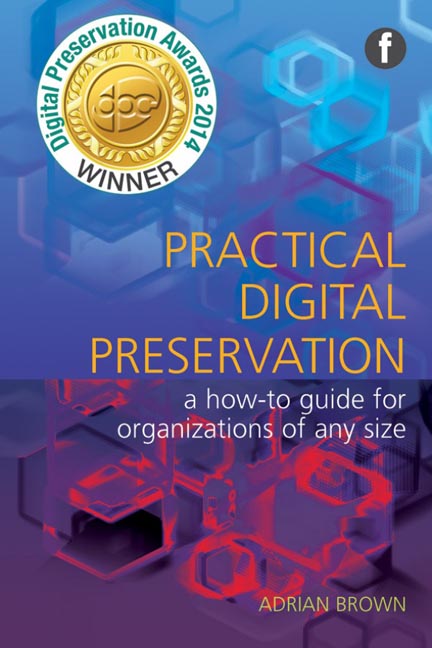Book contents
- Frontmatter
- Contents
- Acknowledgements
- Glossary
- 1 Introduction
- 2 Making the case for digital preservation
- 3 Understanding your requirements
- 4 Models for implementing a digital preservation service
- 5 Selecting and acquiring digital objects
- 6 Accessioning and ingesting digital objects
- 7 Describing digital objects
- 8 Preserving digital objects
- 9 Providing access to users
- 10 Future trends
- Appendices
- Bibliography
- Index
4 - Models for implementing a digital preservation service
Published online by Cambridge University Press: 08 June 2018
- Frontmatter
- Contents
- Acknowledgements
- Glossary
- 1 Introduction
- 2 Making the case for digital preservation
- 3 Understanding your requirements
- 4 Models for implementing a digital preservation service
- 5 Selecting and acquiring digital objects
- 6 Accessioning and ingesting digital objects
- 7 Describing digital objects
- 8 Preserving digital objects
- 9 Providing access to users
- 10 Future trends
- Appendices
- Bibliography
- Index
Summary
Introduction
Many different models are possible for operating a digital preservation service – there are options to suit every size and type of organization, from national bodies with substantial dedicated budgets and teams, to the smallest organization seeking to achieve something practical at minimal cost, and without specialist skills. This chapter analyses the range of possible options, including bespoke, in house and outsourced solutions. It assesses the pros and cons of the alternatives, and considers which elements of a service may be most suited to certain approaches, and under what circumstances. It also considers the current and developing market for providing these solutions. Next, it looks at the process of implementing the chosen solution, and some of the practicalities of operating a digital repository, including the roles required, and availability of suitable training. It then examines the notion of ‘trusted’ digital repositories and proposes a ‘maturity model’ for digital preservation, which enables organizations to assess their capabilities and create a realistic roadmap for developing them to the required level. The alternative models are illustrated by a series of case studies.
Options
Digital preservation is a comparatively new discipline, and models for good practice, including the technologies and services required to support them, therefore exist at varying levels of maturity. Approaches to providing the fundamental elements of a digital repository are now well established, but some of the techniques and technologies required to deliver advanced preservation functions, especially for newer and more complex types of digital content, remain in their infancy.
This section analyses the available options in detail, assessing the respective strengths and weaknesses of each.
Do nothing
Any analysis of options should always include the status quo – not only does this provide a baseline against which other, more positive, options can be assessed, but it also allows a true comparison of the implications of not taking action. The costs of doing nothing include the continued burden of maintaining archival data on inappropriate storage infrastructure, and the costs of recreating, or failing to preserve, digital resources that would be lost as a result of inaction, as described in Chapter 2, ‘Making the case for digital preservation’.
This option assumes no development of digital preservation services, including zero investment and staffing. Table 4.1 sets out the pros and cons of the do nothing option.
- Type
- Chapter
- Information
- Practical Digital PreservationA how-to guide for organizations of any size, pp. 63 - 108Publisher: FacetPrint publication year: 2013



